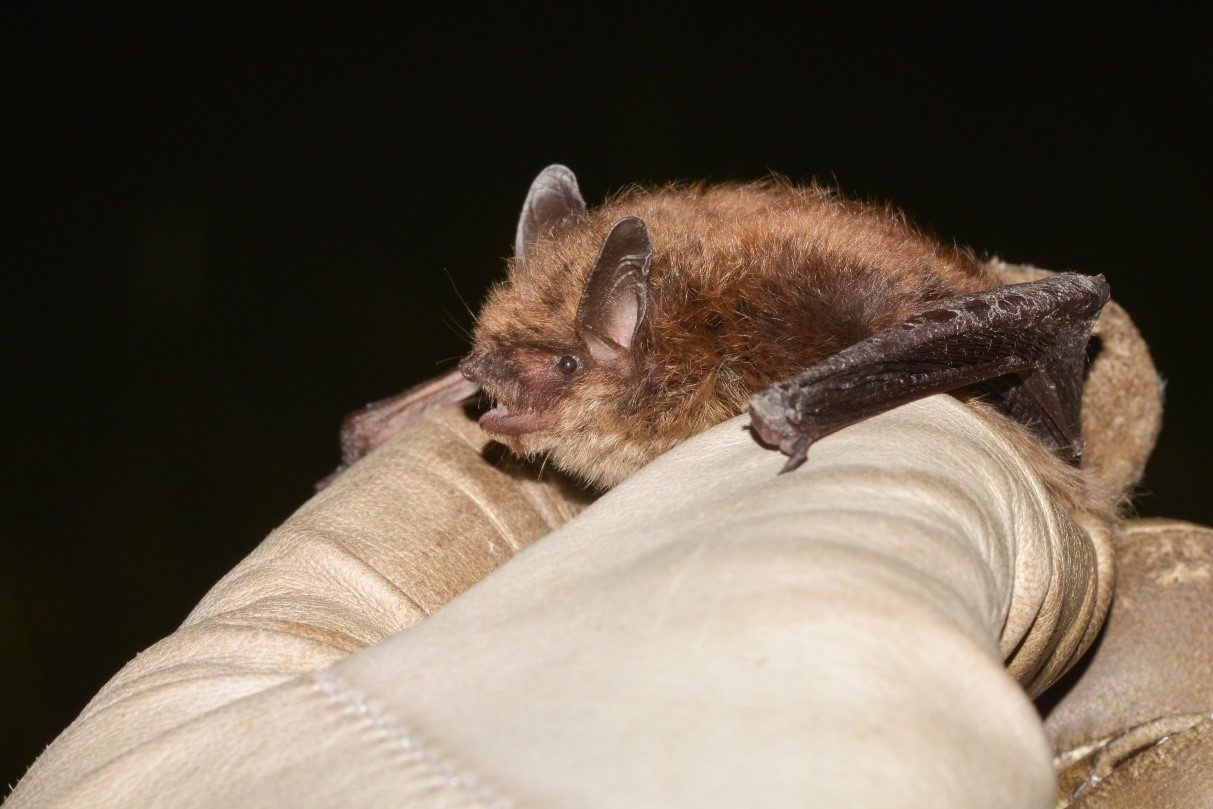South Yorkshire Bat Group have recorded the first female Brandt’s bat for South Yorkshire.
Weighing just 6.5g, the bat was discovered in May during survey undertaken as part of the Sheffield Lakeland Landscape Partnership, which is led by the Sheffield and Rotherham Wildlife Trust and funded by the National Lottery Heritage Fund.
The bat was found in the Sheffield Lakeland on the edge of Broomhead Reservoir near woodland and she was found to have bred in a previous year, making it highly likely that a breeding roost for this species is present in the local area. She was caught and recorded safely by the group’s volunteers using a harp trap. This is a special type of trap and is roughly the size of a concert harp with many vertical strings, hence the name.
The first confirmed male Brandt’s bat record for South Yorkshire was collected from a site within the Sheffield Lakeland area in 2015, with three more captured in 2018. This is the first time a female Brandt’s bat has been caught within South Yorkshire.
Robert from South Yorkshire Bat Group was part of the survey team who discovered the Brandt’s bat told us,
‘We were really pleased to catch a female Brandt’s bat! We had suspected this species was rare in South Yorkshire. This finding suggests the species is likely to be breeding in the county and may be more common than first thought. Sheffield has some superb bat habitats, many close to the city centre, and it is great to increase our understanding of the key areas for bats within the city boundaries’.
Brandt’s bats, hold the record for oldest bat recorded; in 2005, a bat was discovered in a cave in Siberia that had been banded in 1964, making the bat at least 41 years old. Only eating insects, they live in roosts (rather than nests) in caves, trees and houses. Brandt’s bats are widespread and more frequently found in the north and west of England. They look very similar to whiskered bats making identification difficult.
The surveying work carried out by the bat group for the Sheffield Lakeland Landscape Partnership is done by committed volunteers, with the National Lottery Heritage Fund making it possible to purchase some of the specialist equipment needed. These survey findings underline the particular importance of Sheffield’s wooded river valleys to bats, with rivers, reservoirs and woodlands forming key habitat linkages into the heart of the city.
The project is already delivering on its aim to better understand and conserve species across the North West Sheffield Lakeland area. It forms part of the Landscape Conservation Action Plan which has identified various species that it will support including goshawk, osprey, barn owl, willow tit, nightjar, flycatcher, water vole and bats. Julie Riley, the Sheffield Lakeland Landscape Partnership’s Community Ecologist told us,
‘Brandt’s bats are strongly linked to woodland and water, and their presence in the Sheffield Lakeland area tells us that suitable habitat to support a breeding population exists. The work South Yorkshire Bat Group is doing will improve our understanding of which locations within the Sheffield Lakeland support this species, and will help us to identify areas of woodland that can be managed with Brandt’s in mind. We can then target these areas for conservation or enhancement.’
A bat walk with South Yorkshire Bat Group is taking place on 21 September in Bradfield. Contact Danny Hodgson d.hodgson@wildsheffield.com if you’d like to book on. Anyone interested in becoming a member and taking part in surveying work can join the bat group by following instructions on the ‘Become a Member’ page of the group’s website.
If you find an injured bat or need professional guidance about anything bat related call the Bat Helpline on 0345 1300 228.
Brandt’s bat image courtesy of Baptiste Chadeyron
